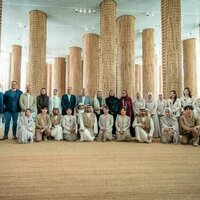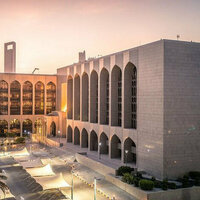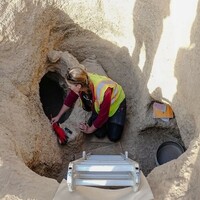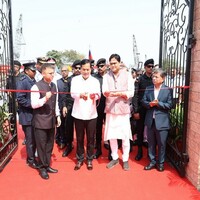Abu Dhabi [UAE], April 21 (ANI/ WAM): The Department of Culture and Tourism - Abu Dhabi (DCT Abu Dhabi) has announced the discovery of the first major Iron Age cemetery in the UAE.
The 3,000-year-old necropolis, found in Al Ain Region, was unearthed by DCT Abu Dhabi's Archaeology Section of the Historic Environment Department. The site likely includes more than one hundred tombs containing an array of grave goods, and casts a new light on a previously unknown chapter of the UAE's rich heritage.
Jaber Saleh Al Merri, Director of the Historic Environment Department at DCT Abu Dhabi, said, 'This discovery promises to transform our understanding of the ancient Emirates. For years, the Iron Age burial traditions remained a mystery, but now we have tangible evidence that brings us closer to the people who lived here 3,000 years ago. It reinforces our efforts to preserve, promote, and protect Abu Dhabi's heritage for future generations.'
The new findings support DCT Abu Dhabi's ongoing efforts to better understand the history and ancient communities of the Arabian Peninsula. As the single best preserved and richly documented chambered tomb necropolis from the Iron Age, the new site in Al Ain Region offers a rare glimpse into the region's social, cultural, and economic dynamics at a key stage in its development.
All the tombs found so far were looted in antiquity. The human remains were found in a fragile condition and a team of forensic archaeologists, including an osteo-archaeologist, was present to ensure that all human remains were treated with care and respect. Laboratory analysis will reveal information regarding age, gender, and health, while the ancient DNA promises to cast light on family relationships and migration movements.
The cemetery's tombs were built by first digging a shaft approximately two metres deep and then digging sideways to create an oval burial chamber. After the body and grave goods were placed in the chamber, the entrance was sealed with mudbricks or stones and the shaft was backfilled. The lack of grave markers on the surface explains why Iron Age tombs have never been found before in Al Ain Region.
A few small pieces of gold jewelry that escaped looters' attention suggest what might once have been found. Despite this, impressive burial goods include richly decorated items as part of the afterlife package, displaying high-quality craftsmanship in a range of media including pottery, carved soft-stone, and metalwork.
Drinking sets include spouted vessels, bowls, and small cups, alongside numerous copper-alloy weaponry, such as spearheads and caches of arrowheads. These last ones often show traces of preserved wood and filaments from their shafting, and one example seems to preserve traces of the quiver that used to contain them. Numerous more personal items have also been found, such as shell cosmetic containers, bead necklaces and bracelets, rings, and razors.
The Iron Age played a pivotal role in the development of the oasis landscape of Al Ain Region. The invention of the falaj - a form of underground aqueduct - around 3,000 years ago, at the start of the Iron Age, set in motion a sustained period of agricultural intensification and expansion that created the oasis landscape characteristic of the United Arab Emirates.
Iron Age villages, forts, temples, aflaj and ancient palm gardens have been found in Al Ain Region by archaeologists, who have been working in the region for over 65 years. Until recently, however, the location of the Iron Age cemeteries and burial customs have remained a mystery.
Tatiana Valente, Field Archaeologist at DCT Abu Dhabi, said, 'We know how people in the Bronze Age and Late Pre-Islamic period buried their dead, but the Iron Age has always been a missing part of the puzzle. We are now in a position to understand the evolution of burial customs over time and learn what these changes might say about the beliefs and traditions of the people who lived here.'
The discovery was made as part of the Funerary Landscapes of Al Ain Project, set up in 2024 to investigate the growing number of prehistoric tombs found during archaeological monitoring of construction work. The project forms part of DCT Abu Dhabi's commitment to research the UNESCO World Heritage Site of Al Ain.
The Cultural Sites of Al Ain were inscribed on the list of UNESCO World Heritage Sites in 2011 in recognition of their outstanding universal value. This discovery provides greater context to the development of prehistoric cultures in the region and the management of water in a landscape characterised by oases, deserts, and mountains. (ANI/ WAM)









































